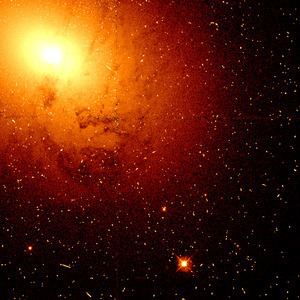Right ascension 08 55 37.7 Redshift 1400 ± 1 km/s Type SAB(s)0/a Magnitude 10.1 Apparent magnitude (V) 10.1 | Declination +78° 13′ 03″ Distance 63 Mly (19.5 Mpc) Apparent size (V) 4′.9 × 4′.1 | |
 | ||
Similar NGC 2748, NGC 1961, NGC 2633, NGC 1501, NGC 2146 | ||
NGC 2655 is a lenticular galaxy in the constellation Camelopardalis. It is at a distance of 60 million light years from Earth. NGC 2655 is a Seyfert galaxy. The galaxy has asymmetric dust lanes in the centre of the galaxy, tidal arms and extended neutral hydrogen gas and may have experienced recently a merger. The complex dynamics of the HI and optical tails suggest the galaxy may have undergonen more mergers in the past. a weak bar has been detected in infrared H band. The diametre of the disk of the galaxy is estimated to be 60 Kpc (195,000 ly).
William Herschel discovered NGC 2655 in September 26, 1802 and descripted it as very bright and considerably large. The galaxy can be glimsed with a 4 inches telescope under dark skies nearly 10° from the north celestial pole. One supernova has been observed in NGC 2655, SN 2011B, a type Ia with peak magnitude 12.8.
NGC 2655 is the brightest member of NGC 2655 group, which also contains the Sc galaxy NGC 2715, NGC 2591, and NGC 2748. One of the gas structures of NGC 2655 is traling off toward the small galaxy UGC 4714.
